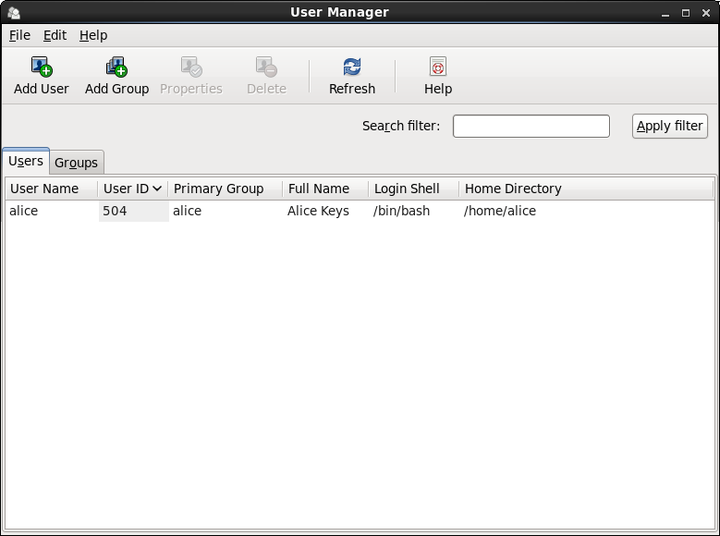The software described in this documentation is either in Extended Support or Sustaining Support. See https://www.oracle.com/us/support/library/enterprise-linux-support-policies-069172.pdf for more information.
Oracle recommends that you upgrade the software described by this documentation as soon as possible.
You can use the User Manager GUI (system-config-users) to add or delete users and groups and to modify settings such as passwords, home directories, login shells, and group membership. Alternatively, you can use commands such as useradd and groupadd.
Figure 24.1 shows the User Manager GUI with the Users tab selected.
In an enterprise environment that might have hundreds of servers and thousands of users, user and group account information is more likely to be held in a central repository rather than in files on individual servers. You can configure user and group information on a central server and retrieve this information by using services such as Lightweight Directory Access Protocol (LDAP) or Network Information Service (NIS). You can also create users’ home directories on a central server and automatically mount, or access, these remote file systems when a user logs in to a system.


